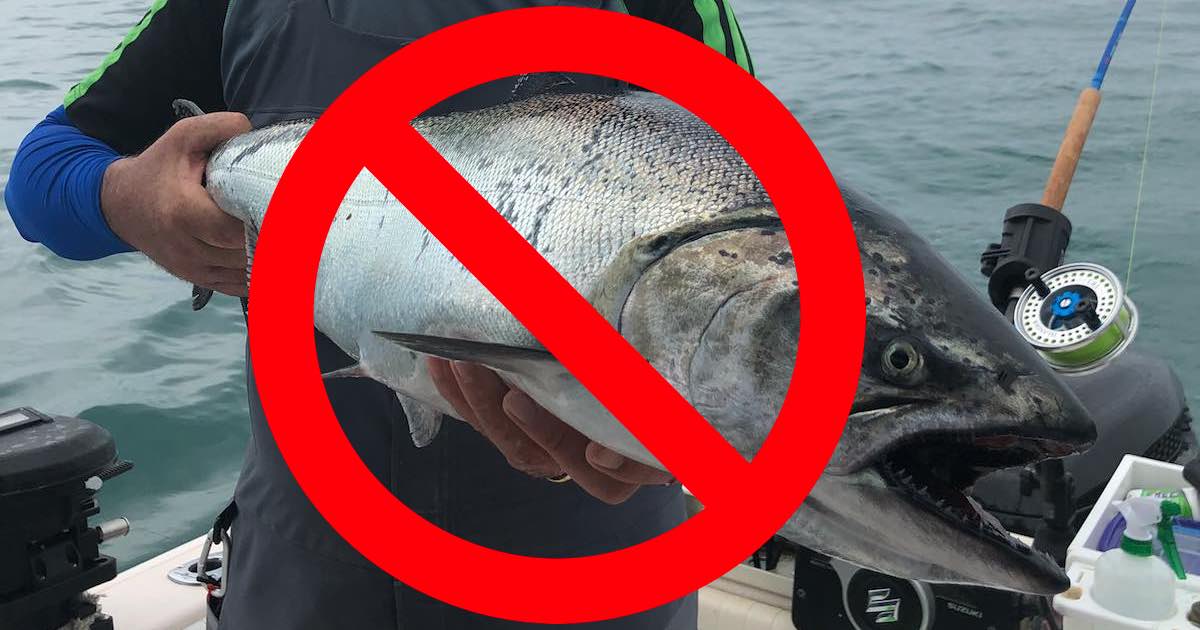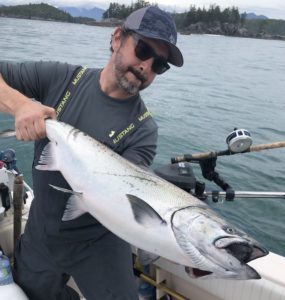
At long last, by mid-May, the Department of Fisheries and Oceans (DFO) got around to making an announcement on the suite of limited Chinook retention proposals from the Sport Fishing Advisory Board (SFAB) that was intended to go into effect on April 1. The contents fulfilled the oft said maxim that government usually puts out bad news on a Friday afternoon, although bad news doesn’t do justice to the decision. Frankly, it’s hard to find polite words to describe the consequences of continued Chinook non-retention to the recreational fishery around most of the inner South Coast. For the Vancouver area in particular, which is regulated to a no Chinook fishing standard, and also has no bottom fishing opportunity, the news is catastrophic.
All these proposals were in the hands of the relevant regional management staff by mid-winter to be thoroughly reviewed through an assessment framework, the results of which were made public on February 22, 2021; the delay on the decision is inexplicable and unacceptable. Other than those in Juan de Fuca Strait, all of the proposals that were vetoed (south of Courtenay, around Howe Sound and the stretch from above Nanaimo along the Vancouver Island shore into Saanich Inlet, and offshore WCVI) were assessed as of low risk to the stocks of concern. Even the Victoria area proposal would have been classified as low risk for the months of April and May, before the main migration timing of the Fraser stream-type Chinook gets underway. So much for decisions being guided by science, unless the only acceptable risk is zero risk, in which case the inner South Coast recreational fishery has a very limited shelf life.

Hatchery Chinook – photo courtesy Brent Soby
Although offshore on the West Coast of Vancouver Island (WCVI) is the least accessible area (to most people), of all the proposals that were turned down for me the hardest to understand was the one that would have allowed retention of adipose fin-clipped chinook outside the surfline on the west coast of Vancouver Island. As many readers will know, the SFAB and its constituent organizations have been advocating mass marking (MM) (adipose fin-clipping) of all Chinook produced in Canadian hatcheries to allow for mark selective fishery (MSF) management. Such has been the case with coho in southern BC and similar to that employed in Washington State for 20+ years. Although Chinook MM and MSF isn’t a new concept, the DFO seems content to study the idea to death and avoid making any kind of decision while it manages the inner South Coast recreational fishery into oblivion.

Adipose fin-clipped hatchery Chinook
One of the desirable benchmarks of a MSF opportunity is to have a relatively high mark (adipose fin-clipping) rate in order to avoid catching and releasing many unmarked, thought to be wild fish, with attendant release mortality. There is plenty of evidence to indicate that the Chinook mark rate (MR) in the April to June period along offshore WCVI is plenty high, often over 50%, with the reason being that most of these fish are of US origin—of which 100% of their hatchery origin fish are adipose fin-clipped. Canada currently doesn’t clip anywhere near enough Chinook to account for the mark rate at this time. The point is that these are the fish that Canada is entitled to harvest under the Pacific Salmon Treaty as an offset for Canadian origin Chinook harvested in Alaska. This is what the DFO risk assessment had to say about this proposal: “Stocks of concern: The magnitude of the incremental exploitation rate (ER) impact is very low with a highly likely degree of certainty = Low Risk.”

Joel Unickow, sport fisherman with a hatchery Chinook
And even with that ranking, and the knowledge that early season recreational effort is low in the offshore area, the proposal was turned down. The signal this sends about the current federal government’s willingness to implement Chinook MSF management is profoundly discouraging because, given the likelihood that there will be numerous stocks of concern continuing at that status for decades to come, without MSF opportunity Chinook non-retention will be the norm forever around much of southern BC.
Apart from a bleak immediate future for the recreational fishery for much of the summer period, the bigger question is where do we go from here? The SFAB, as the designated advisory and consultation process between our fishery and the DFO, has worked with regional staff using decades worth of data to create minimal opportunities that pose low risk to the stocks of concern that might have provided the fishery a lifeline until some better management regime can be implemented. And now, for the most part, these proposals have been rejected. There is no new data to work with, so somehow the federal government needs to understand that it is destroying culturally, socially, and economically, the southern BC recreational fishery all in the name of saving so few fish that the difference can’t be counted on the spawning grounds of individual rivers.

Jeremy Maynard, Professional Guide, Owner and Operator of The Ardent Angler
Island Fisherman Magazine values and respects the voices of our readers and industry professionals. If you’re interested in writing an IFM Op-Ed, please send an email to fish@ifishmag.com.
2 Comments
Leave A Comment
Visit the Store
$34.99
$34.99
Featured Catch

Joel Unickow halibut (Photo: Rob Frawley Lucky Strike Sportfishing Tofino)








the herring fishery is still open ? and some in stream spawning surveys what happenned to them ? and the modellores they are the new fish magicians and you can fish all winter so what wrong with that ? and how about reviewing some hatchery production managers ? and more support for community hatcheries so what wrong with that o i just fiqured it out it is easury for them to just close it i would like to hear some names not just dfo all the time
It is time we take stand and organize….70yrs old THIS IS MY RETIREMENT and my only pleasure is fishing the Gulf Isands. At the point where I don’t care anymore…enough is enough .